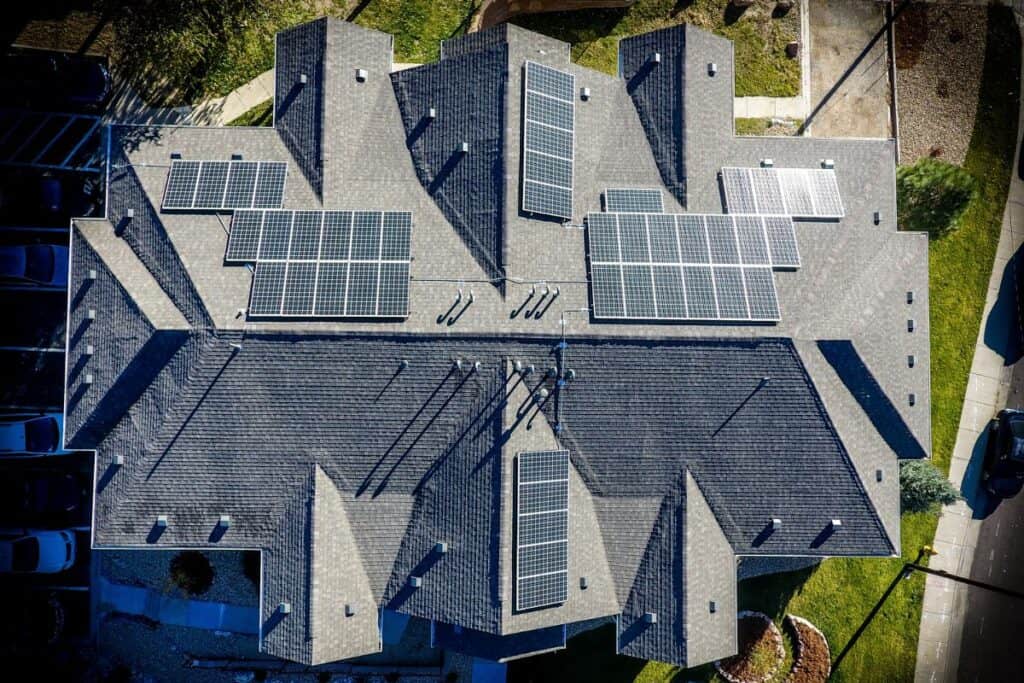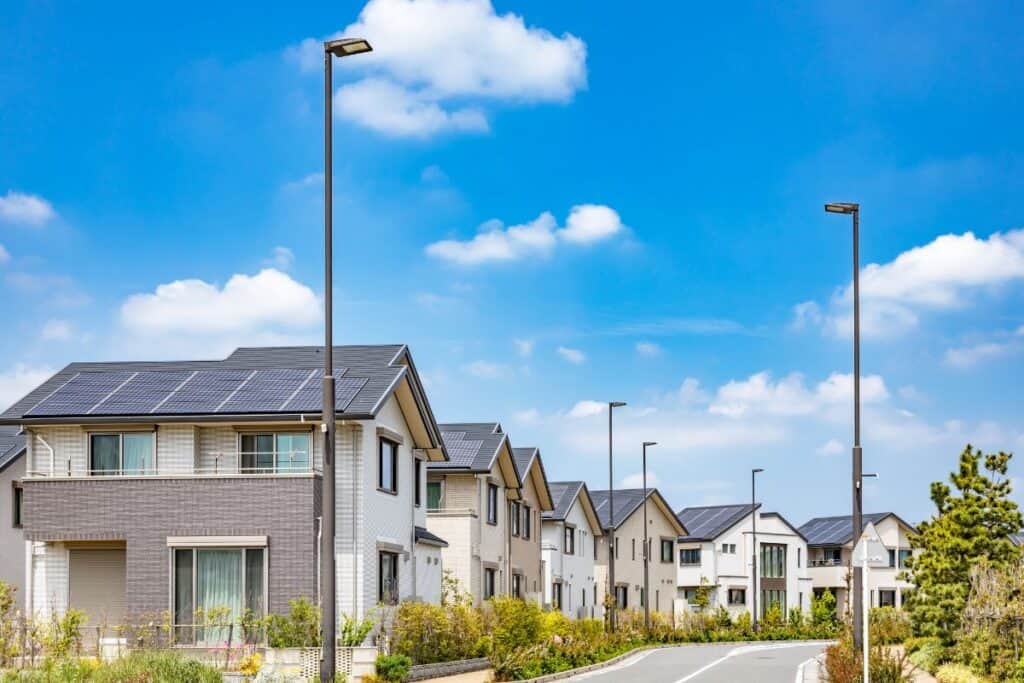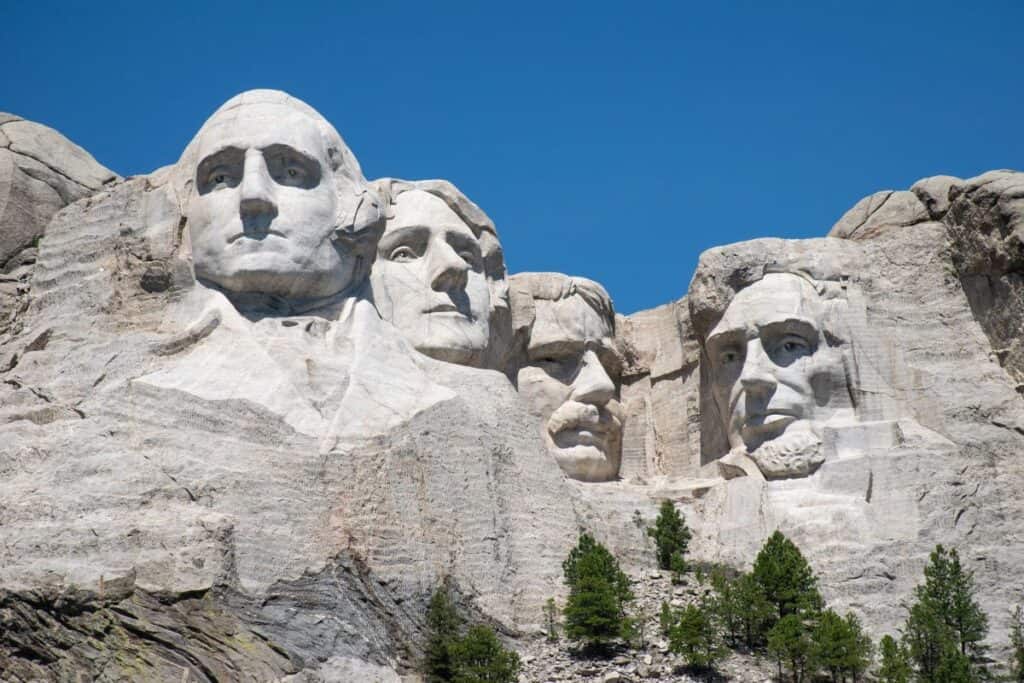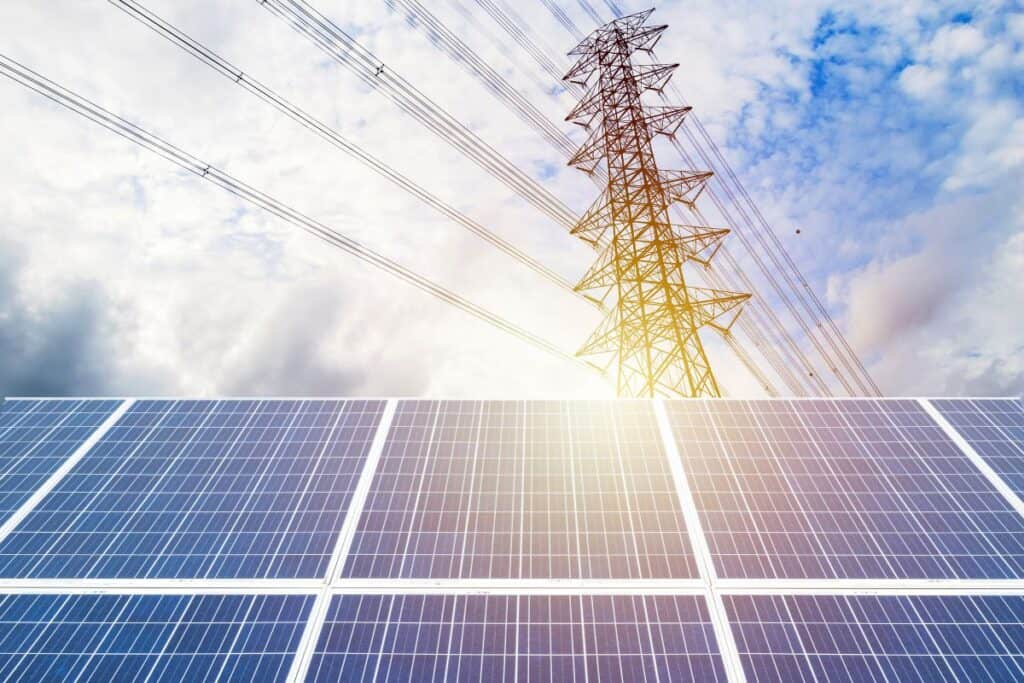South Dakota’s rich sunshine makes it an excellent place for solar panel installation. It might be surprising, but the state gets enough sun to make solar power a viable option.
South Dakota receives an average of 4.5 to 5 hours of peak sun per day. This solar resource is significant and places the state slightly above the national average. Furthermore, summers in South Dakota can be especially sunny. This leads to increased power output from your solar panels during this period.
This is everything you need to know about installing solar in South Dakota.
Boost Your Savings: Incentives for Installing Solar Power in South Dakota
When you install solar power in South Dakota, you open up a world of financial benefits.
These incentives, both state-level and federal, lower the overall installation cost and increase the return on your investment. From tax credits to sales tax exemptions, let’s dissect these rewards, explaining how they work and their financial impacts.
State-level Solar Incentives in South Dakota
South Dakota is committed to promoting renewable energy, and this commitment reflects in its solar incentives.
The state’s Sales and Use Tax Refund for Renewable Energy Systems is an excellent example. Under this incentive, your solar power equipment purchase in South Dakota is exempt from the standard 4.5% sales tax. Depending on the scale of your installation, this could translate into considerable savings.
Equally beneficial is the state’s policy on Net Metering. This system allows homeowners who generate excess solar power to sell it back to the grid.
By doing so, you offset your electricity costs, essentially making your solar installation more profitable.

In addition to state incentives, you can also benefit from federal programs.
Unleashing Savings with Federal Investment Tax Credit in South Dakota
The Federal Investment Tax Credit (ITC) is a game-changer for solar adopters in South Dakota.
ITC allows you to deduct 26% of the cost of installing a solar energy system from your federal taxes. This significantly reduces the overall cost.
Let’s dive into a practical example.
Suppose the cost of your new solar panel system is $18,000. With the ITC, you could potentially save $4,680 (26% of $18,000) on your federal taxes.
It’s essential to remember this is a credit, not a refund. You need to ensure you owe enough taxes to use the full credit in the year you claim it. If not, the remaining credit can roll over to the next year, as long as the ITC is in effect.
But, time is of the essence. The ITC rate will drop to 22% in 2023 and is set to expire for residential installations in 2024. Commercial projects will receive a permanent 10%.
If you’re considering solar, now is a fantastic time to maximize your savings.
Bear in mind that you should consult with a tax professional to understand how the ITC applies to your situation. Each individual’s tax circumstances are unique, and the ITC’s impact can vary accordingly.
Net Metering in South Dakota: Maximise Your Solar Savings
Net Metering forms an essential part of the financial equation when installing solar panels, and yes, South Dakota has a beneficial net metering policy.
But, what is net metering, and how does it work in the Mount Rushmore State?
Net metering allows homeowners to sell the excess electricity generated by their solar panels back to the grid. When your panels produce more power than you use, this surplus is sent back to your utility company. In exchange, you earn credits on your electricity bill.
Essentially, your electric meter spins backward, thus the term “net metering”. (You can learn everything there is to know about net metering here)
In South Dakota, net metering policies apply to residential solar systems up to 40 kilowatts in size. This is more than adequate for typical home installations.
This means that any surplus power you generate will help reduce your future electricity bills.
Let’s illustrate with a practical example. Suppose your solar system generates 500 kilowatt-hours of excess electricity in a sunny summer month.
This energy goes back to the grid, and you earn credits for it. In a less sunny month, like November, when your system only produces 300 kilowatt-hours, but your home uses 500 kilowatt-hours, you can use your credits to cover the 200 kilowatt-hour shortfall.
By adopting net metering, South Dakota empowers you to maximize the return on your solar investment. It’s another compelling reason to consider solar power in this state.
Taking advantage of solar power through net metering is great for your energy bills, and tax incentives make it even more enticing.
In South Dakota, there is one more you need to know of and that is the sales and property tax exemptions for solar.

Understanding South Dakota’s Sales and Property Tax Exemptions for Solar
When you’re purchasing solar power systems in South Dakota, you’re exempt from the standard sales tax, which typically ranges around 4.5%.
What does this mean in real terms?
If your solar power system costs $10,000, you could save $450 right off the bat!
Let’s move on to property taxes. South Dakota offers a Property Tax Exemption for solar power systems.
This means the added value to your property from installing solar panels won’t increase your property taxes.
So if the value of your property goes up by $10,000 due to your new solar power system, your tax bill stays the same.
To make the most of these exemptions, it’s crucial to keep all your purchase documents in order. These include receipts and proof of installation.
A registered solar installer can also help guide you through the process and ensure that you meet all the requirements for the tax exemptions.
How Much Money Can You Save With Solar In South Dakota: Crunching the Incentive Numbers
Let’s talk money because when you decide to go solar in South Dakota, the financial benefits are undeniable.
To simplify, let’s work through a hypothetical example.
Assume you install a typical residential solar system that costs around $20,000 before any incentives. Now let’s consider the savings:
- Federal Solar Tax Credit
This incentive allows you to deduct 26% of the cost of your solar system from your federal taxes. So, for our $20,000 system, you can save $5,200 (26% of $20,000).
- Net Metering
As we explained earlier, you can earn credits for excess electricity sent back to the grid. Let’s estimate your solar system saves you $50 per month on average. Over a year, you’ll save $600.
- Sales and Property Tax Exemptions
South Dakota offers a 100% sales tax exemption on solar installations. For our example, assuming a 4.5% state sales tax rate, you’ll save $900 ($20,000 * 4.5%). Additionally, solar panels won’t increase your property taxes, providing further long-term savings.
So, adding up the savings: $5,200 (federal tax credit) + $600 (annual net metering savings) + $900 (sales tax exemption) equals $6,700 in the first year alone.
Remember, the net metering savings will continue every year, and over the average 25-year lifespan of your solar system, you could save a staggering $15,000 just from lower electricity bills!
While these figures are rough estimates and actual solar savings will vary, they illustrate how South Dakota’s solar incentives can significantly offset your installation costs and lead to substantial long-term savings.
How Much Does It Cost To Install Solar Installation South Dakota
The cost of installing solar panels in South Dakota can vary based on several factors, including the size of the system, the type of solar panels, what type of inverter your use, the complexity of the installation, and the installer you choose.
However, we can give you a general idea of what to expect.
As of 2023, the national average cost of solar panels is between $2.50 and $3.50 per watt. So, for a standard 5kW residential solar panel system, you’re looking at an initial investment of $12,500 to $17,500 before any incentives or rebates.
But don’t let the upfront cost intimidate you. It’s essential to consider the long-term savings you’ll earn from reduced electricity bills and solar incentives.
As we highlighted in the previous section, the savings from the Federal Solar Tax Credit, net metering, and state tax exemptions can dramatically reduce the overall cost. In our example, a $20,000 system could see savings of $6,700 in the first year alone.
It’s also important to remember that solar panels can increase the value of your home.
A study by Zillow found that homes with solar energy systems sold for 4.1% more on average than comparable homes without solar power.
So, if you ever decide to sell your home, you’ll likely see a return on your investment there as well.
To get the most accurate cost estimate for installing solar panels in your South Dakota home, we recommend getting quotes from multiple local solar installers.
These professionals can assess your home’s solar potential and provide a more personalized cost breakdown.
Understanding South Dakota’s Solar Laws
South Dakota’s solar laws play a vital role in the process of solar installation and usage.
These laws are intended to protect consumers, promote renewable energy sources, and regulate how solar power integrates with the existing power grid.
South Dakota has Access Laws SB 626, which prohibits any regulation, covenant, contract, deed, lease, or other agreement which effectively prevents or restricts the installation of solar energy devices, subject to reasonable restrictions.
But what does that actually mean?
Impact of South Dakota’s Access Laws SB 626 on Solar Installations
South Dakota’s Access Laws SB 626 has been pivotal in promoting the widespread use of solar power across the state.
Enacted to prevent restrictions on the installation and use of solar energy systems, it creates a more favorable environment for homeowners wanting to switch to this renewable energy source.
This law protects the “right to the sun,” meaning that no regulation, covenant, contract, deed, lease, or other agreement can effectively prevent or restrict you from installing solar energy devices on your property.
It supports solar rights and aims to clear the path for homeowners to take control of their energy production.

However, this doesn’t mean that you can install solar panels without considering factors like safety, aesthetics, and property value.
The law permits “reasonable restrictions,” which are usually determined by local authorities or homeowners associations (HOAs).
These may include guidelines on where panels can be installed on a roof or requirements about their appearance.
For instance, you might be required to install panels at certain angles to maintain neighborhood aesthetics or to keep them out of sight from the street.
However, these restrictions should not significantly decrease the panels’ performance or increase their cost.
What does this mean practically?
In practical terms, South Dakota’s Access Laws SB 626 gives you the freedom to embrace solar power, with the reassurance that unnecessary obstacles won’t prevent you from doing so.
Then there’s the Renewable, Recycled, and Conserved Energy Objective (SB 20), which encourages utilities to incorporate renewable energy into their energy mix. Although this law doesn’t directly affect homeowners, it does contribute to a broader shift towards renewable energy in the state.
Another mouthful, I know.
Additionally, South Dakota’s Energy Conservation Law (HB 1123) encourages energy efficiency in state buildings, which may indirectly promote the use of solar energy.
Finally, as discussed above South Dakota also has a generous metering policy. You can learn all there is to know about net metering here.
it’s also important to note that local permitting and zoning laws can also impact solar installations.
South Dakota’s Renewable, Recycled, and Conserved Energy Objective (SB 20) and Its Impact on Solar Installations
This policy isn’t a binding renewable portfolio standard (RPS) that obligates utilities to generate a specified portion of their electricity from renewable sources.
Instead, it encourages utilities to strive towards a voluntary objective of producing 10% of all retail electricity sales from renewable and recycled energy by 2015.
Even though the objective set by SB 20 is voluntary, it’s noteworthy because it sets a clear intention to encourage utilities to embrace renewable energy, including solar power.
By setting this objective, the South Dakota government acknowledges the importance of renewable energy in enhancing energy independence, reducing carbon emissions, and fostering a sustainable future.
The impact of this policy on solar installations is indirect but significant.
The commitment shown by the state could inspire utilities and private entities to invest more in renewable energy.
Consequently, it could result in improved infrastructure and services for solar installation, as well as potentially more favorable rates for solar energy users.
Furthermore, this policy could have a ripple effect, motivating local businesses and homeowners to consider solar installations.
As renewable energy becomes more mainstream, residents might see solar power as not just an eco-friendly alternative, but also a cost-effective and practical choice.
However, it’s essential to remember that this policy doesn’t guarantee specific benefits or incentives for solar panel installation.
Another significant piece of legislation that impacts solar installations in South Dakota is the Energy Conservation Law, also known as HB 1123.

South Dakota’s Energy Conservation Law (HB 1123) and Its Impact on Solar Installations
Enacted in 2008, this law requires all new state buildings and major renovations of existing state buildings to exceed the energy conservation measures of the International Energy Conservation Code (IECC) by at least 30%.
The primary aim of this law is to reduce energy usage in state buildings. However, it indirectly promotes renewable energy sources, including solar power.
This law encourages the construction industry and state building administrators to consider energy-efficient alternatives, such as solar panels, to meet the stringent energy-saving requirements.
By incorporating renewable energy into building designs, South Dakota is not only reducing its carbon footprint, but also setting a positive example for other sectors and private homeowners.
This legislation shows the state’s commitment to energy conservation, thereby promoting the reputation of solar power as an efficient, viable energy solution.
The impact of the Energy Conservation Law on solar installations is substantial.
While it directly affects state buildings, it also creates a domino effect.
The more state buildings incorporate solar energy systems, the more familiar and accepted these systems become.
This familiarity can lead to more private homeowners and businesses feeling comfortable with and choosing to install solar panels.
However, this law does not provide specific incentives for solar installations for private homeowners or businesses.
Permits and Zoning for Solar Installation in South Dakota
While South Dakota does not have state-wide solar permitting standards, local counties and municipalities may have their own.
These laws vary from city to city and can influence the installation location, panel size, height, and even the aesthetics of solar panel systems.
Let’s consider some practical examples from different cities across South Dakota:
In Sioux Falls, the city code allows for the installation of solar panels as an accessory use in all zoning districts. The code has specific provisions for rooftop, ground-mounted, and building-integrated installations. It clearly states that a building permit is required for solar panel installations. Thus, for Sioux Falls residents, getting your project permitted is an essential first step before proceeding with the installation.

On the other hand, in Rapid City, solar panel installations must comply with the city’s zoning ordinances that govern structure height and placement, and in some cases, aesthetic design standards. This means that, depending on your property’s zoning and the specifics of your solar project, additional permits may be required or certain restrictions may apply.
The city of Pierre has also embraced solar energy, but with certain restrictions. For example, ground-mounted solar panel systems are only allowed in some zoning districts, and they cannot exceed a certain height.
The local laws and regulations may seem complicated, but they are in place to ensure safety, manage land use effectively, and ensure that solar installations are in harmony with their surroundings.
What’s crucial is for potential solar panel owners to consult with local solar installation companies or the local city planning department. They can provide specific guidance based on your property’s location and other factors.
Remember, doing your homework can save you from potential legal hassles and ensure that your transition to solar energy is smooth and successful.
How To Connect Your Solar Panels to the Grid in South Dakota: The Process Simplified
In South Dakota, connecting your newly installed solar panels to the grid isn’t as complex as it might seem, but it does involve a few important steps to ensure everything is done correctly and safely.
Firstly, you need to ensure that your solar panel system is compliant with the local electric utility’s interconnection requirements.
Most utilities in South Dakota require an interconnection agreement.

This document outlines the terms and conditions under which your solar system can be connected to the grid.
The process begins with an application for interconnection to your utility company.
You’ll provide details about your system’s specifications, including its capacity, model, and the proposed method of connection.
The utility will review the application and confirm whether your system is eligible for interconnection.
Once your application is approved, the next step is typically an inspection of your solar panel system.
This inspection is performed by a representative of the utility company or a certified electrician.
They will verify that the installation is safe, and it adheres to the electrical code and utility’s interconnection standards.
If your system passes the inspection, the utility will give you the green light to connect your solar system to the grid. I
n some cases, a new meter may need to be installed. This meter will measure the power you draw from the grid and the excess power your solar system feeds back into it.
Finally, you’ll begin generating solar power and sending any excess energy back to the grid. You’ll then start receiving credits on your utility bill under South Dakota’s net metering policy.
Remember, the process can vary depending on your utility provider. It’s always a good idea to contact them directly to understand the exact steps and paperwork required.
What is the process to get an interconnection agreement in South Dakota?
Getting an interconnection agreement is a crucial step when you install a solar panel system.
It allows you to connect your system to the grid and sell any excess energy back to your utility company. You can also use the grid for backup power when your solar panels aren’t producing enough electricity.
The process for getting an interconnection agreement in South Dakota generally follows these steps:
- Submit an Application
First, you need to submit an interconnection application to your local utility. This application typically includes details about your solar installation, such as the size and type of system, and sometimes requires a small application fee.
- System Review
After submitting your application, the utility will review it to ensure your system meets their requirements and safety standards. They might ask for additional information or even conduct a site visit.
- Sign the Agreement
If your application is approved, the utility will provide an interconnection agreement. This agreement outlines the terms and conditions of connecting your system to the grid. Review this document carefully, and sign it once you agree with its terms.
- Final Inspection and Connection
Once you’ve signed the agreement, the utility will conduct a final inspection of your system. After the inspection, they’ll connect your solar panel system to the grid.
- Begin Net Metering
With everything set up, you can now send any excess power your system generates back to the grid in exchange for credits on your utility bill.
Connecting to the grid maximizes the financial benefits of your solar system and provides a reliable backup power source, making it a worthwhile step in your solar journey.
